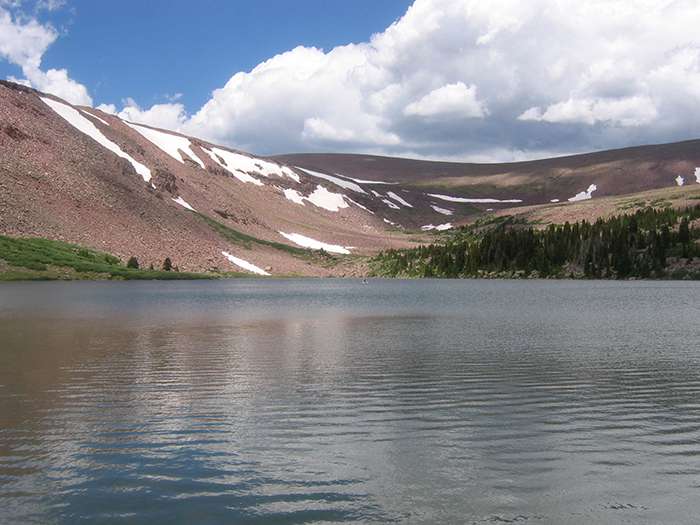'Frightening' findings foretell ills for ecosystems

When it comes to determining the causes negatively affecting the biodiversity of our ecosystems, a new interdisciplinary study at Western is putting numbers behind the devastation. And it's not good.
The study's lead author, recent PhD graduate Beth Hundey (Geography), showed, for the first time, that 70 per cent of nitrates in high mountain lakes in Utah are from human-caused sources – with fertilizers having, by far, the most impact at 60 per cent, along with another 10 per cent caused by fossil fuels. The research suggests these findings could apply to other mountain ranges in western North America.
"It's frightening that these remote areas are seeing such a large human impact," Hundey said. "We were surprised there has been such a large contribution from agriculture to these remote mountain sites."
Hundey's research, co-authored by Geography professor Katrina Moser, Earth Sciences professor Fred Longstaffe and his former PhD student Sam Russell, was published this week in the journal Nature Communications.
Unlike temperature and dissolved oxygen, the presence of normal levels of nitrates usually does not have a direct effect on ecosystems. However, excess levels of nitrates in water can create conditions that significantly alter an area's biodiversity.
Hundey and her colleagues used a triple-isotope technique (an atom with the same number of protons, but differing numbers of neutrons) to prove the nitrate's origin. The isotope signatures – not unlike fingerprints – distinguish various nitrate sources, including fertilizers, soil and the atmosphere. The team accomplished this using an apparatus built, and customized, by Western's Laboratory for Stable Isotope Science, led by Longstaffe, who holds the Canada Research Chair in Stable Isotope Science.
Hundey discovered nitrates can travel hundreds of kilometres through the air – be it through the process of gasses coming off of farmland, or even being picked up through dust and traveling to the site. The area she studied is approximately 150 kilometres from any urban area – in this case Salt Lake City, which has a population of just under 200,000.
Hundey added this problem not only affects biodiversity and reduces water quality, it has particular ramifications for the health of mountain ecosystems and for populations living nearby.
"Systems like this are a warning, not only for protecting those resources and the biodiversity of that area, but also in populated regions," she said. "If it's reaching an area as remote as this, then it should be no surprise that it's a problem. The systems that have evolved over such a long time have evolved with low levels of nitrates, or what has been made available. So, to suddenly put in all sorts of nitrates can causes huge ramifications."
By identifying the cause of the problem, communities and governments will be able to develop mitigation strategies, particularly given anticipated expansion of human populations and fertilizer use.
"It's already past becoming a problem, but we can't consider ourselves beyond making a change," said Hundey. "This is too important. If we are to do something there is time, and that time is sooner rather than later.
"We need to have a conversation about how you balance food production and fertilizer with protecting really valuable water resources. We're not saying to stop using fertilizer, but knowing they have an impact on distant lakes, we can examine different ways of using and applying them. There needs to be an understanding that we can do better."
Journal information: Nature Communications
Provided by University of Western Ontario


















